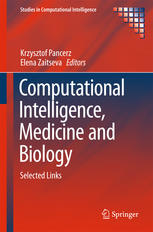

Most ebook files are in PDF format, so you can easily read them using various software such as Foxit Reader or directly on the Google Chrome browser.
Some ebook files are released by publishers in other formats such as .awz, .mobi, .epub, .fb2, etc. You may need to install specific software to read these formats on mobile/PC, such as Calibre.
Please read the tutorial at this link: https://ebookbell.com/faq
We offer FREE conversion to the popular formats you request; however, this may take some time. Therefore, right after payment, please email us, and we will try to provide the service as quickly as possible.
For some exceptional file formats or broken links (if any), please refrain from opening any disputes. Instead, email us first, and we will try to assist within a maximum of 6 hours.
EbookBell Team

0.0
0 reviewsThis book contains an interesting and state-of the art collection of chapters presenting several examples of attempts to developing modern tools utilizing computational intelligence in different real life problems encountered by humans. Reasoning, prediction, modeling, optimization, decision making, etc. need modern, soft and intelligent algorithms, methods and methodologies to solve, in the efficient ways, problems appearing in human activity. The contents of the book is divided into two parts. Part I, consisting of four chapters, is devoted to selected links of computational intelligence, medicine, health care and biomechanics. Several problems are considered: estimation of healthcare system reliability, classification of ultrasound thyroid images, application of fuzzy logic to measure weight status and central fatness, and deriving kinematics directly from video records. Part II, also consisting of four chapters, is devoted to selected links of computational intelligence and biology. The common denominator of three chapters is Physarum polycephalum, one-cell organisms able to build complex networks for solving different computational tasks. One chapter focuses on a novel device, the memristor, that has possible uses both in the creation of hardware neural nets for artificial intelligence and as the connection between a hardware neural net and a living neuronal cell network in the treatment and monitoring of neurological disease. This book is intended for a wide audience of readers who are interested in various aspects of computational intelligence.